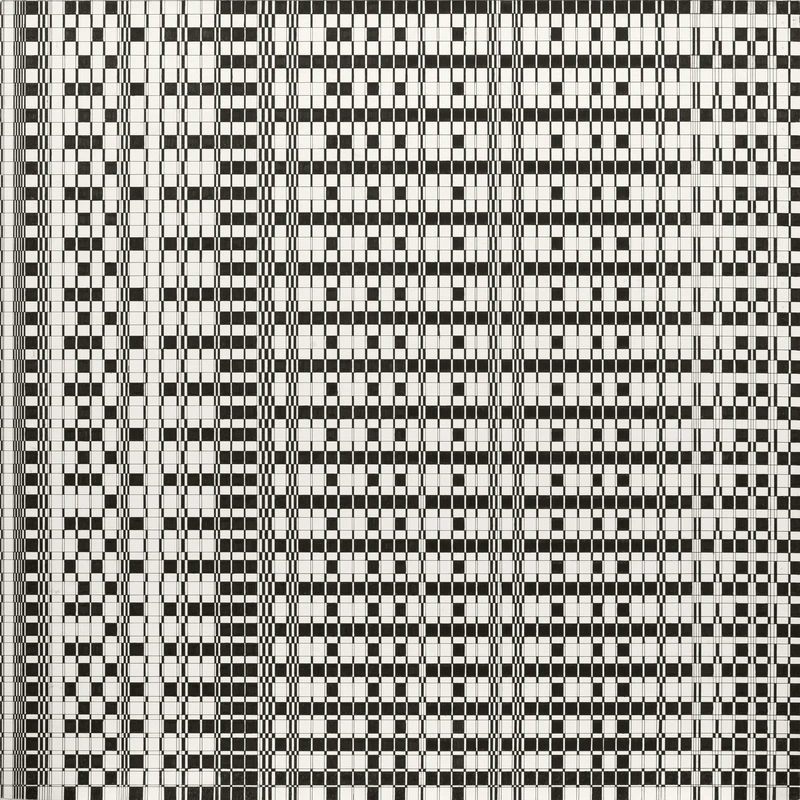Arteonics
27 Nov 2024-31 Jan 2025
PV 27 Nov 2024, 6-8pm


Building on the success of our 2018 exhibition Writing New Codes, and coinciding with Electric Dreams, at Tate Modern (28 Nov – 1 Jun 2025), The Mayor Gallery is excited to delve once again into the innovative realm of early kinetic and computer art. This exhibition features pioneering international artists including Giovanni Anceschi, Marina Apollonio, Davide Boriani, Miguel Chevalier, Waldemar, and Analivia Cordeiro, Hugo Demarco, Gabriele Devecchi, Lucia Di Luciano, Julio Le Parc, Liliane Lijn, Robert Mallary, Vera Molnár, François Morellet, Peter Struycken, Grazia Varisco and Gerhard von Graevenitz, showcasing their innovative approaches and experimental practices which laid the groundwork for the rich and diverse landscape of digital art that we see today.
Influenced by aspects of Constructivism, Op Art, Systems Art and Concrete art, artists began in the mid 20th Century experimenting with using technology as a medium for creative expression as computers became more accessible. Partly a response to the overt subjectivity of Abstract Expressionism they discovered how mathematical and logical processes of programming and algorithms could generate captivating visual forms. Teaching themselves to code, they created and programmed strict scientific parameters, which, along with random elements of chance, allowed artists to use the computer as a tool to produce unique and unexpected outputs.
Kinetic and Op Art, precursors to computer and generative art, shaped their development through shared themes of movement, seriality, perception, and viewer engagement. Characterised by mechanical, optical, and interactive elements, this movement challenged traditional notions of static art and emphasised the role of viewer participation and experience.
In the 1960s, the radical group Arte Programmata, which included Marina Apollonio (b. 1940), Gabriele Devecchi (1938- 2011) and Lucia Di Luciano amongst others, emerged in Italy focusing on the relationship between art and technology through systematic and mathematical processes, whilst eschewing any romantic ideals of the individual. The GRAV group (Groupe de Recherche d'Art Visuel), founded in Paris in 1960, was pivotal in advancing Arte Programmata's concepts. Comprising of artists such as Vera Molnar (1924 - 2023) and Julio Le Parc (b. 1928), the group aimed to engage viewers through participatory art experiences, advocating for art as a shared endeavour that transcends traditional solitary forms. François Morellet (1926 - 2016), was a foundational figure in both Arte Programmata and the GRAV group. His works often incorporated geometric patterns, light, the elements of chance and humour to explore visual perception and the viewer's role in their experience of art.
The now legendary exhibition Cybernetic Serendipity, 1968, at London’s Institute of Contemporary Arts was the first comprehensive international exhibition in Britain devoted to exploring the relationship between new computing technology and the arts. Ambitious in scope and scale the exhibition involved over 300 people - artists, designers and practitioners from around the world and had huge success with both visitors and the press. One work, ‘Quad II’ by Robert Mallary exhibited was sold to the Tate by The Mayor Gallery. A year after Cybernetic Serendipity, the major exhibition Tendencies 4: computers and visual research (1969) took place in the Gallery of Contemporary Art, Zagreb with both Mallary and Cordeiro participating.
The term "Arteônica," a fusion of "art" and "electronic," was coined by Brazilian artist Waldemar Cordeiro (1925 - 1973). Cordeiro's work explored the intersection of kinetic and generative art through interactive installations that engaged viewers in real-time generative processes. He used the term as the title of a 1971 exhibition, framing the computer as a tool for positive societal change and democratising art and culture.
Analivia Cordeiro (b. 1954), his daughter, is a prominent figure in the realm of generative art. She uses these processes as well as the mediums of Dance and Performance to create dynamic and visually engaging artworks. Her practice not only explores the aesthetic possibilities of generative systems but also engages with deeper themes related to perception, interaction, and the nature of creativity.
The exhibition ends with a work by Miguel Chevalier (b. 1959), a French contemporary artist working in, and pushing the boundaries of, the Generative and Digital Art field. His pioneering use of algorithms and software has allowed him to create complex visual systems that evolve over time, challenging traditional notions of static artworks. His focus is on large-scale installations that engage viewers in immersive experiences such as his current large-scale immersive exhibition at the Grand Palais Immersif in Paris, running until April 2025.
Through their innovative approaches the artists of this era laid the groundwork for the rich and diverse landscape of digital art today. Their legacy continues to inspire artists as they navigate the ever-evolving relationship between art and technology whilst challenging conventional definitions of what art can be.
Arteonics press release
Download